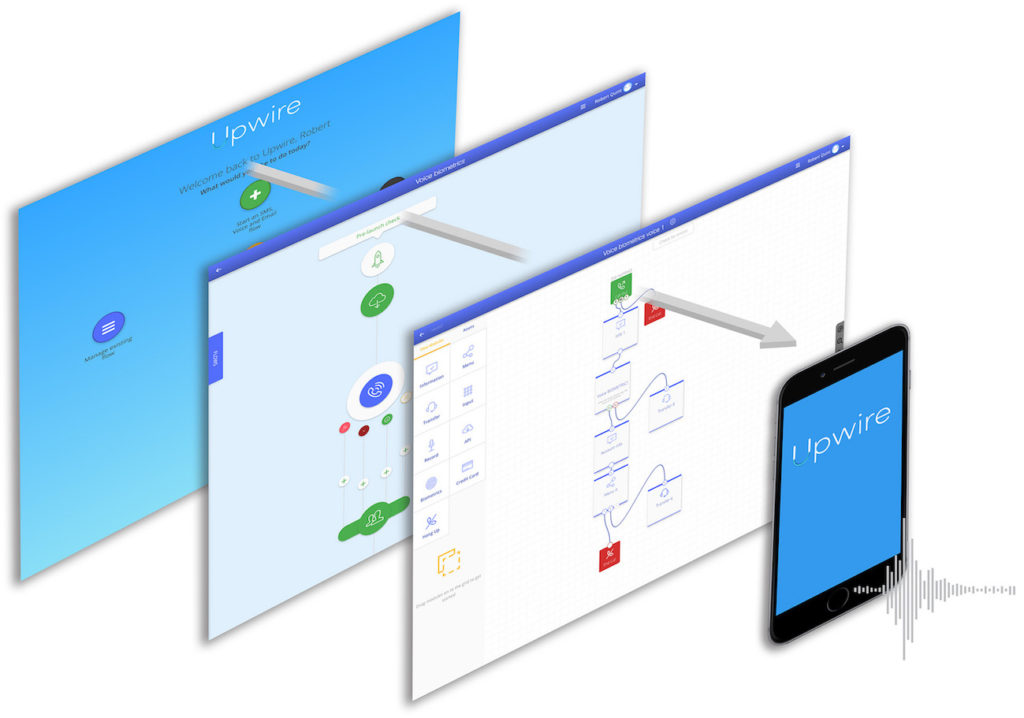People on the hunt for global cloud communication APIs often ask us “what’s the difference between Upwire and Twilio?” Both offer the ability to build voice and text communications with integrations into other applications or platforms. But how they do it differs greatly.
Carrier disruption vs end-user experience
Twilio was founded to disrupt legacy telecommunications carriers by offering API’s in to a SIP network. It is built for IT developers who are adept at coding in common programming languages such as Java, Python and Node.js. The integration and the communication content, sequence and settings need to be coded.
Upwire also offers cloud communication APIs but was founded with the vision to simplify the end user experience. It does this through a unique ‘drag and drop’ interface. This allows users to create simple or complex voice and text message flows without coding. Once built, integration is as simple as passing the API details to your developer. And if you are a developer you can still use Upwire to save a heap of time and effort.
It’s all about empowering users to create brilliant business communications in minutes with no need for specialist IT skills. By getting away from the dependency on coding Upwire makes cloud communication more accessible, quicker to build, and quicker to change in the future.

The difference when launching new cloud communication applications
This last point is particularly important as cloud communication platforms evolve beyond straight voice and text applications. Today, you can use these platforms to create credit card payment IVRs, 2-factor authentication using voice biometrics and SMS chatbots.
With the ability to quickly create and deploy these capabilities, businesses can do real-world proof of concept testing faster than ever before. It’s then a case of ‘fail fast’ or deploy across the business. And by avoiding the need for IT developers in this process, cloud communications’ inherent agility is multiplied.
The role of developers in your cloud communications
Just as it set out to do, Twilio broke new ground disrupting legacy networks by providing APIs into a cloud communication platform. It’s done a fantastic job of simplifying and marketing cloud communication APIs to developers. It offers a wide range of programming languages and clear documentation.
Twilio has always unapologetically positioned itself as being a developers’ platform and users need to be competent IT programmers to use it.
Upwire is all about taking cloud communications beyond a dependancy on IT developers. The easy-to-use interface lets business users create sophisticated communications in minutes.
The vision is to do for cloud communications what WordPress did for website development, and what Canva did for graphic design. All these platform-as-a-service providers let users without specialist skills create remarkable outputs that were previously only achievable by full-time specialists.
So there you have it. Whilst both Twilio and Upwire operate in the same broad category of cloud communications, they appeal to very different end users with each offering unique benefits.
A free trial of Upwire’s signature drag and drop interface is available HERE.


